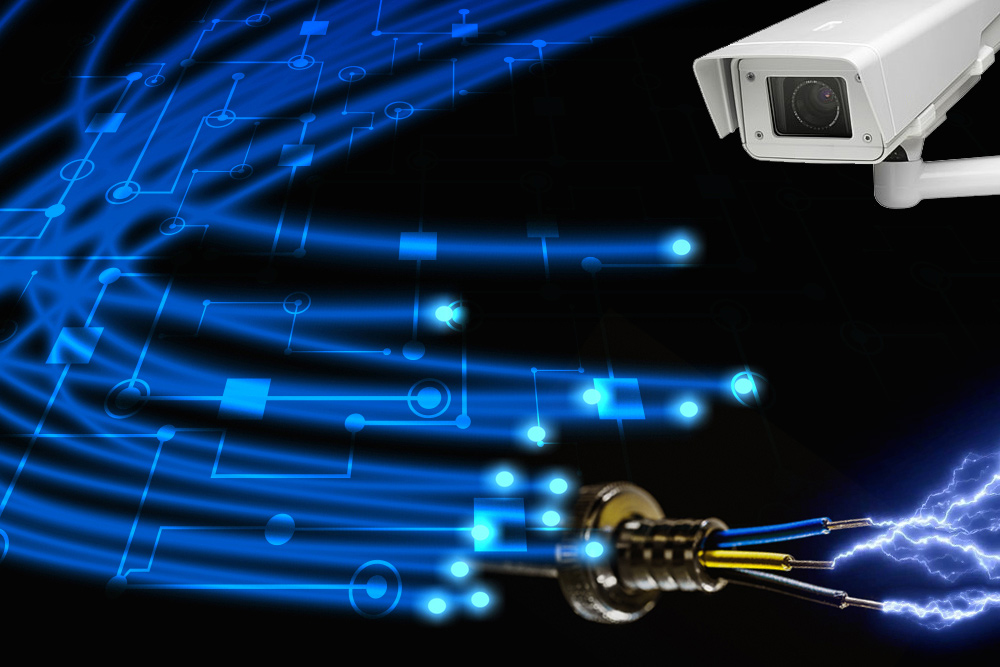Secure Your Residential Or Commercial Property With Trustworthy Fiber Optic Protection Solutions
In an era where protection hazards are increasingly advanced, the need for effective protection services is paramount. Fiber optic protection systems stand out by offering outstanding reliability and efficiency, leveraging innovative light transmission modern technology to boost surveillance abilities. security fibers. Comprehending the ins and outs of fiber optic safety and security can brighten the course to securing your property a lot more successfully.
Advantages of Fiber Optic Safety And Security
Fiber optic protection options use a series of advantages that make them significantly necessary in today's digital landscape. Among the most substantial benefits is their premium bandwidth capability, which allows for the transmission of big quantities of information over fars away without considerable signal destruction. This capability is specifically beneficial for protection systems that rely upon high-def video monitoring and real-time tracking.
Furthermore, fiber optic cables are inherently extra safe and secure than traditional copper electrical wiring. They are unsusceptible to electro-magnetic disturbance, making them less prone to hacking or eavesdropping. This boosted safety and security is vital for protecting sensitive information and keeping the stability of monitoring systems.
In addition, optical fiber are a lot more sturdy and resistant to environmental variables, such as dampness and temperature level variations, ensuring lasting dependability and lowered upkeep costs. The light-weight nature of fiber optic cables also simplifies installation procedures, enabling better adaptability in system style.
Exactly How Fiber Optic Solution Work
In modern security applications, the procedure of fiber optic systems relies upon the principles of light transmission via flexible glass or plastic fibers. These fibers are made to carry light signals over long ranges with very little loss, making them suitable for transmitting data associated with protection surveillance. The core of the fiber, surrounded by a cladding material, makes sure that light signals remain contained within the core with a sensation called complete internal reflection.
When incorporated right into protection systems, fiber optic cables can transfer data from numerous sensors, such as electronic cameras, motion detectors, and alarms, to a central surveillance terminal. The high data transfer capacity of fiber optics permits the transmission of large amounts of data concurrently, making it possible for real-time security and prompt feedback to possible hazards.

Kinds Of Fiber Optic Safety And Security Solutions
Numerous kinds of fiber optic protection solutions have emerged to boost monitoring and protection across various atmospheres. One popular solution is fiber optic boundary breach detection systems (PIDS), designed to keep an eye on and safeguard building borders with the discovery of resonances and disturbances along fiber optic wires. These systems provide real-time signals, allowing timely reactions to unapproved access efforts.
One more effective solution is fiber optic video security. This innovation leverages high-definition video cameras attached via fiber optic cable televisions to transmit video clip information over cross countries without substantial loss of high quality. This setup is specifically beneficial in extensive locations, such as airports and commercial websites, where traditional copper wires may falter.
Furthermore, fiber optic sensing units are significantly made use of for ecological surveillance, spotting modifications in temperature, pressure, or acoustic signals that might show protection violations or harmful conditions. These sensing units provide high sensitivity and accuracy, making them excellent for critical infrastructure protection.

Installation and Maintenance Tips
Reliable installment and maintenance of fiber optic safety solutions are important for guaranteeing their ideal performance click for info and long life. Fiber optic cable televisions must be routed safely, staying clear of sharp bends or twists that can jeopardize their stability.
Throughout setup, it is advisable to conduct comprehensive testing of the system to verify that all parts are functioning correctly. Routine upkeep checks must be set up to inspect the fiber optic cable televisions for any indications of wear or damages, in addition to to make sure that links continue to be secure. Cleaning the connectors occasionally is likewise crucial to protect against signal loss as a result of dirt or particles.
In addition, keeping an upgraded supply of mounted parts and their requirements can promote easier troubleshooting and upgrades. By sticking to these setup and maintenance suggestions, residential property owners can make best use of the effectiveness of their fiber optic safety options, guaranteeing a trustworthy defense against potential risks.
Contrasting Expenses and Effectiveness
When evaluating fiber optic safety options, comprehending the equilibrium between costs and performance ends up being critical (security fibers). Organizations must consider the upfront financial investment, continuous maintenance expenditures, and the lasting worth these systems provide. While fiber optic systems might call for a greater preliminary installment expense compared to conventional copper electrical wiring, their go now toughness and reduced vulnerability to electromagnetic disturbance commonly convert to lower upkeep prices gradually
Efficiency is one more critical aspect; fiber optic safety and security systems provide boosted information transmission speeds and enhanced reliability. They can cover bigger ranges without signal destruction, making them excellent for large residential properties or remote places. The high data transfer capability supports sophisticated security applications, such as high-definition video clip surveillance and real-time surveillance, which are important for thorough safety and security monitoring.
Ultimately, the option between price and effectiveness ought to be guided by certain security demands and risk assessments. Organizations should assess their unique requirements, considering factors like home dimension, safety hazards, and technological developments. By conducting an extensive cost-benefit analysis, stakeholders can make informed choices that align with their safety and security goals while ensuring an audio investment in fiber optic technology.
Verdict
Finally, fiber optic safety and security solutions offer substantial advantages in regards to efficiency, reliability, and resistance to environmental disturbances. These systems improve security abilities and perimeter security, making them an efficient choice for detailed protection. First installation prices may be greater, the long-term benefits, consisting of decreased upkeep and exceptional functionality, warrant the investment. Ultimately, the fostering of fiber optic technology stands for a forward-thinking strategy to protecting homes versus evolving security risks.